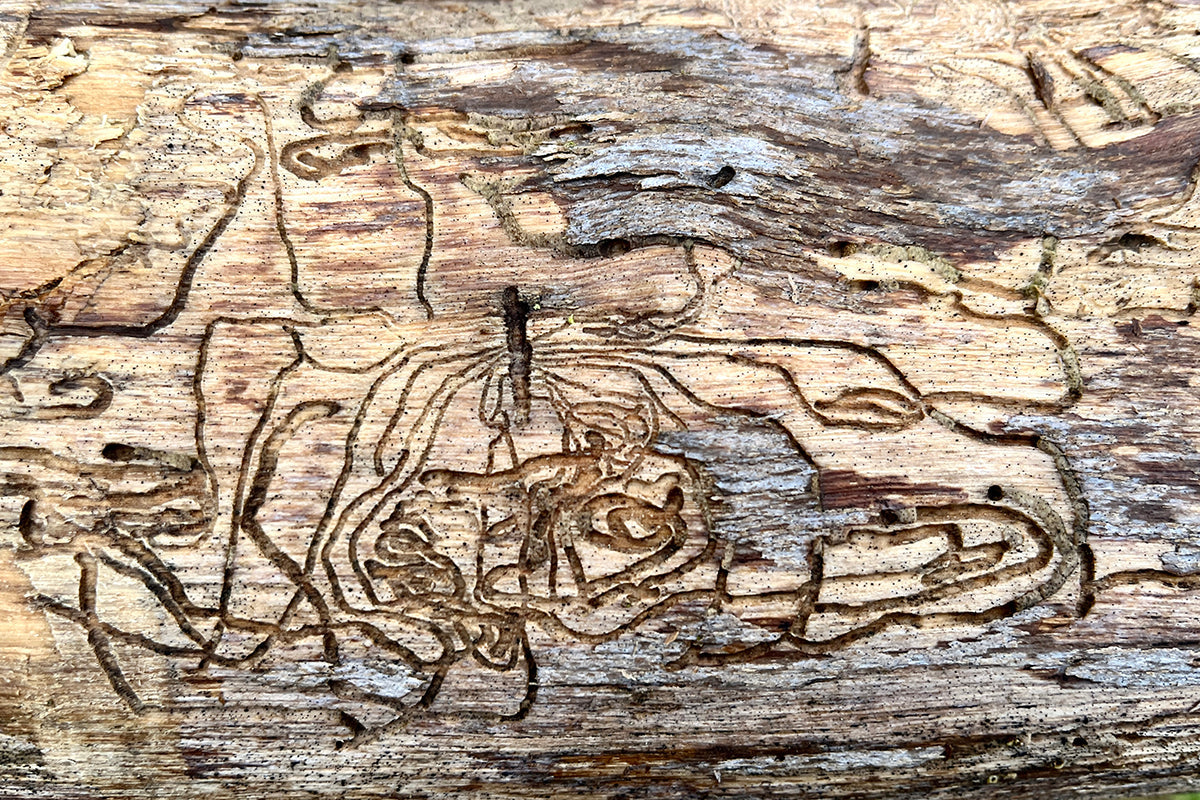Lost sentinels - Dutch elm disease

We spotted some interesting markings on a fallen branch this week. Anyone old enough to remember the 1960’s and early 70’s will also remember the English elm (Ulmus procera), a tree that was such a dominant feature of the British countryside. It was a tree valued both for its aesthetic presence and practical application, prized for its durable wood which was utilised in shipbuilding, furniture making, and various construction purposes. The tree would also support a rich ecosystem, hosting 80 invertebrate species including the white-letter hairstreak butterfly.
Dutch elm disease (Ophiostoma novo-ulmi), spread by the elm bark beetle, devastated the population in the 1970s, destroying approximately 25 million trees, and the sound of chainsaws seemed to be a permanent fixture of the countryside for many years to follow. Thankfully, a significant population survived in East Sussex, particularly around Brighton, where approximately 14,000 mature specimens were documented in 2011.
Current conservation efforts have focused on developing disease-resistant hybrids such as ‘Lutece’, which combines disease resistance along with the traditional elm characteristics.
The branch we spotted (pictured) is a good example of what happens. The beetle’s developing larvae live beneath the bark and leave attractive radiating tunnels that become visible when the bark peels away. These channels can be seen to widen as the developing creature gets bigger over time. Elm still survives in a number of hedgerows surrounding Genus HQ. Often achieving 15 or 20 feet in height, we’re always tempted to think there’s going to be a local resurgence of these lost sentinels.
Sadly, before reaching maturity, they always get cut down by the disease which causes the tree to react by blocking its own xylem vessels in an attempt to stop the disease from spreading. This in turn leads to water and nutrient loss and the tree's subsequent demise.







